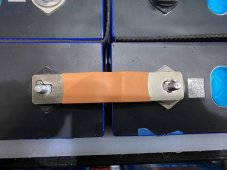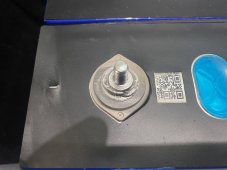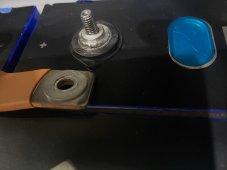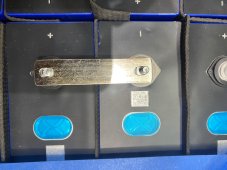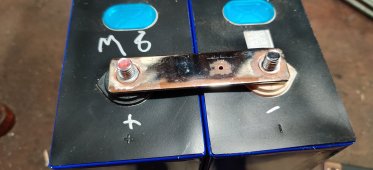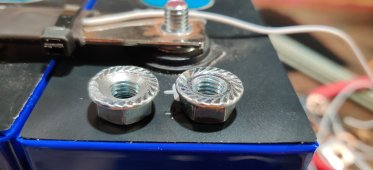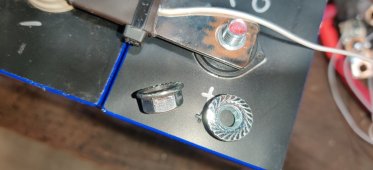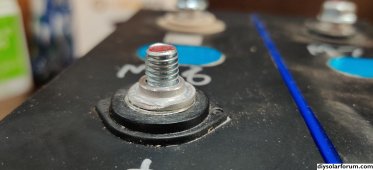LohaDragon
New Member
These terminals appear to be arcing or even melting. This battery saw very light duty for a short period while testing minor electrical components, but will drive an electric vehicle at far greater loads.
I wire brushed black residue off the terminals before taking the picture. The terminals look deformed where the black residue was. I don't recall them arriving like that.
Only one of the bus bars has arc marks.
There seems to be a significant space between the terminal stud and the bus bar. But not larger than the factory supply bars. The connection is flex bus bar, stainless steel washer, BMS terminal ring, stainless steel nut. The nuts were properly torqued I believe and you can see the terminal base impression on the bus bar.
Considering tapping copper washers to fit the terminal studs, then placing bus bar on top.
What is happening and how to fix?
Thanks for all I've learned in this community!
16S battery, 310AH, 3.65V, flexible copper bus bars, sourced from Alibaba grade A
I wire brushed black residue off the terminals before taking the picture. The terminals look deformed where the black residue was. I don't recall them arriving like that.
Only one of the bus bars has arc marks.
There seems to be a significant space between the terminal stud and the bus bar. But not larger than the factory supply bars. The connection is flex bus bar, stainless steel washer, BMS terminal ring, stainless steel nut. The nuts were properly torqued I believe and you can see the terminal base impression on the bus bar.
Considering tapping copper washers to fit the terminal studs, then placing bus bar on top.
What is happening and how to fix?
Thanks for all I've learned in this community!
16S battery, 310AH, 3.65V, flexible copper bus bars, sourced from Alibaba grade A



